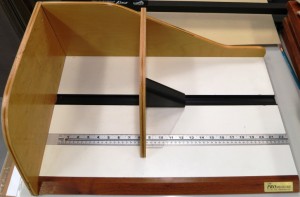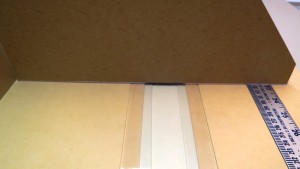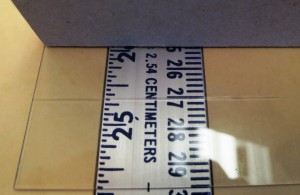This year, The Smithsonian Libraries (SIL) was given a monetary award by the Smithsonian Collections Care and Preservation Fund (CCPF) to re-house 558 folio volumes of special materials collections housed at the Cooper-Hewitt National Design Library (CHMDL). These items were identified as requiring housing/re-housing by contract book conservators who conducted the CCPF funded condition survey of more than 4000 items at CHMDL in 2011-2012.

Library staff will order new or replacement protective enclosures to stabilize books, concentrating on unprotected folios, many containing loose and fragile plates and detached boards, and shelved lying flat one on top of another. These items are susceptible to increased damaged when handled. Enclosures will provide much needed support structure to contain and protect these oversized volumes – some awaiting further treatment. It is usual practice to have protective enclosures measured and fitted in the SIL Book Conservation Lab in Landover, MD. However, the decision has been made to avoid unnecessary shipping and movement of rare and unprotected materials back and forth from New York. Rather, the measuring and fitting of enclosures will be overseen by trained CHMDL staff with the use of a custom-made measuring device.
Preservation Services Library Technician Don Stankavage consulted with Head of Preservation Services Vanessa Haight Smith to plan an initial design for the measurer and then set about building the device. Modelling the device on the Lab’s current manually operated book measurer, a CMI PRO MEASURE, a replica was created using a variety of board widths, glue, Vivak (a flexible polyester sheet), and double- sided tape.

In order to ensure that large folios could be measured, the custom-made device required a ruler which would stretch to thirty-six inches or ninety-one centimeters. To allow for either form of measurement to be selected, it was decided that the ruler should be removable so that it could be flipped around as needed. A track was built to secure the ruler and an “extension tray” was created that would stay connected with the main frame of the device via use of the ruler. As an added convenience when measuring smaller objects, and to allow for easier storage and shipping of the device, the “extension tray” was designed to be disconnected as needed.

Vivak proved a durable substitute for the molded plastic on the CMI device. The custom-made “slide handle” was built from a combination of Vivak and heavy board. The triangular hand hold was covered with plain brown book cloth to protect the integrity of the cardboard and to help create a surface that would be easy to grip. The Vivak track for the “slide handle” was measured and adhered to the frame with double-sided tape so that the “slide handle” would move with ease without being too loose. A line, etched with an awl, was spaced accurately so that it would take into account the side of the main frame, the thickness of the “slide handle” portion that is pushed flush against a book when measuring, and a small space on the Vivak so that measurements could be easily read.



Large and more standard sized objects were tested on the completed custom-made device and the measurements were compared with those taken on the CMI device. Some minor adjustments were then made for the starting point of the ruler. The accuracy of the measurements taken on the custom-made device were equal to the those taken on the CMI device and, at last, the somewhat crude but effective custom-made measurer was ready to durably serve the needs of the CHMDL.



Be First to Comment